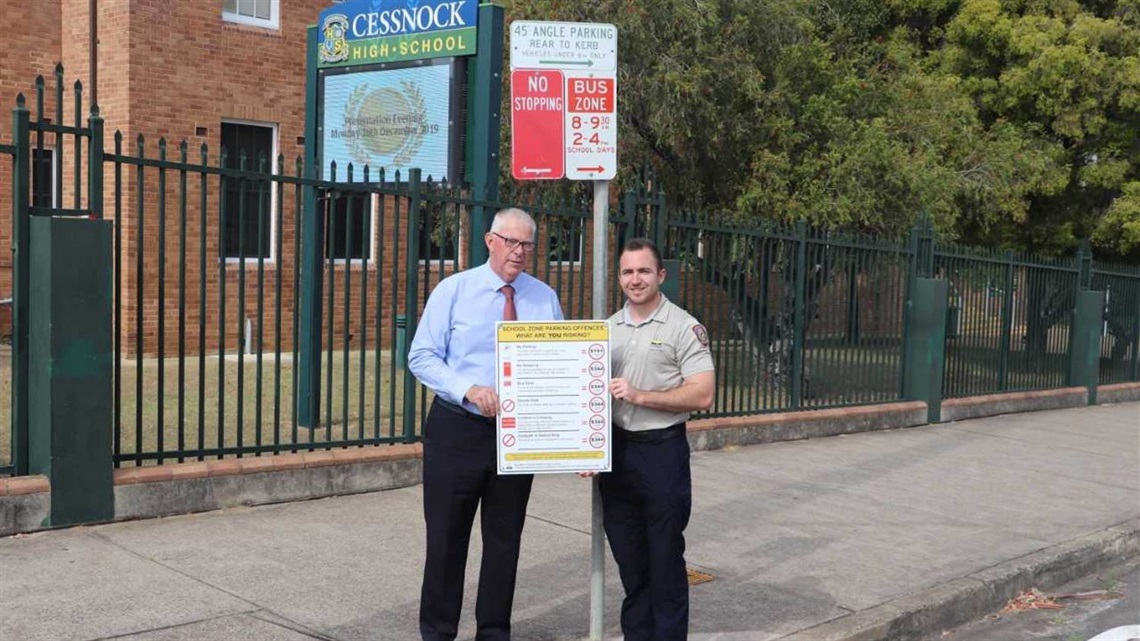Parking education in the spotlight
Published on 12 August 2020

Please note - the above photo was taken prior to COVID-19 and the requirement to socially distance.
Council has recently received a number of enquiries regarding parking rules so it’s timely to remind the community of their responsibilities when parking vehicles to ensure they are parked legally, not creating safety issues for others.
Student safety across the Cessnock Local Government Area has always been a key priority for Council with Rangers carrying out school zones patrols every day.
Parking offences in school zones carry a penalty of two demerit points and the majority of the offences will mean those who are caught will be dealt a $349 fine.
Some offences include parking in a ‘no parking’ zone ($194), stopping where a ‘no stopping’ sign applies ($349), stopping in a bus zone ($349), double parking next to another vehicle ($349), stopping within 20 metres before or 10 metres after a children’s crossing ($464) or stopping on a footpath or nature strip ($349).
Cessnock City Council’s Principal Ranger, Jason Mullee said school zone safety is a top priority, but often people don’t understand the rules or the penalties that apply. The rules and penalties are in place for a reason, and that is to keep our children safe.
“Parking rules outside of school zones is also a concern. Where a sign displays a control, such as No Stopping, Disabled Parking Only or timed parking that’s pretty straight forward,” said Jason.
“However, many motorist believe they are parking legally when they are not. You must not park on or across a driveway or prevent access to a property, this includes parking in your own driveway outside of the property boundary,” added Jason.
Another misconception is motorist believe they can park on the nature strip out the front of their property. A driver must not stop on a bicycle path, footpath, shared path or dividing strip, or a nature strip adjacent to a length of road in a built-up area.
Many motorists get complacent and park where it’s convenient, however this creates safety issues to pedestrians and other motorists. Another common offence is not parking in the direction of travel. This means drivers must park their vehicle the direction of travel of vehicles in the marked lane or line of traffic on, or next to, the part of the road where the driver parks.
Not only are you risking the safety of others by parking illegally, you are also risking a fine.